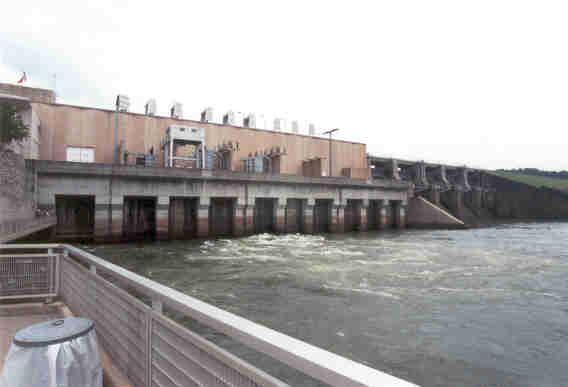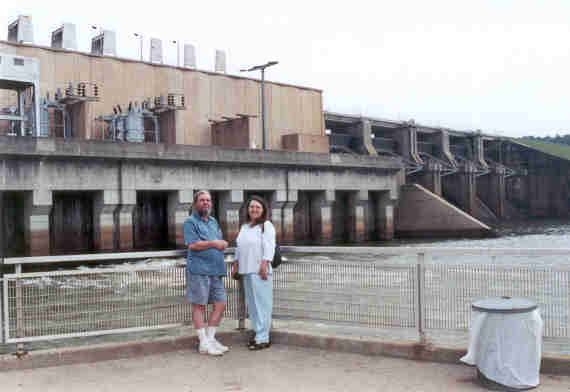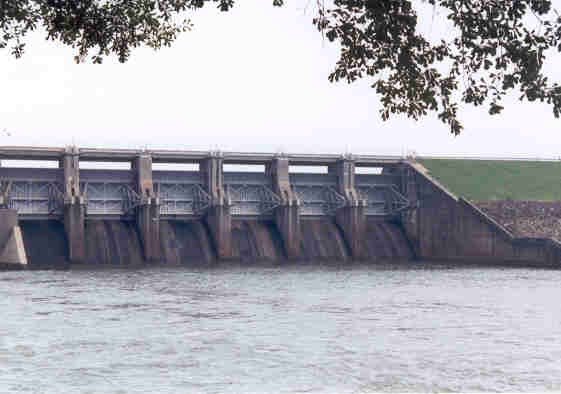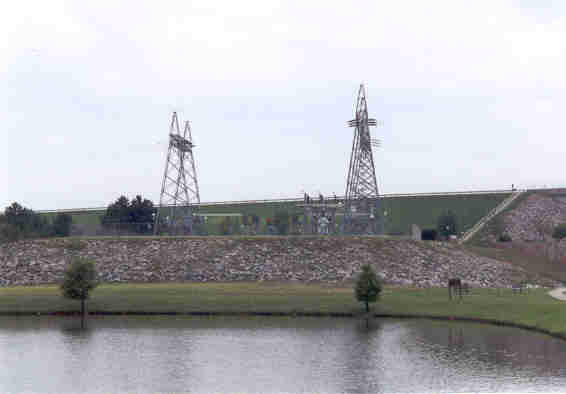|
West Point Dam
|

|
|
This dam is located on the Chattahoochee River between
the towns of West Point and LaGrange, GA. We bagged it one Sunday
afternoon, but we will be going back on a weekday because they offer tours of
the dam. At least the Visitors Center, located at the project
office, is open on weekends. The Corps maintains a very nice day use
area at the dam. The dam is 7,250 feet long (it starts getting flat in
middle Georgia!) with a maximum height of 97 feet. The concrete
powerhouse/spillway portion is 896 feet long, the rest of the dam is
earth and rock. The dam was closed in October, 1974.
|
|
BTW, this was the first picture taken with the new super
wide lens. So far we are pleased with it.
|

|
|
We went down to Lagrange to visit son David and his
fiancee Rebecca. They took us the dam, and snapped this picture of
us. Notice the turbulence from the turbine output. TVA will let you tie
up to fish at the turbine outputs if you are crazy enough. The Corps had
a barricade across the river a couple of hundred yards downstream, and
said "keep out"... a good idea! While West Point does not have
a lock, it plays an important part in navigation on the
Apalachicola-Chattahoochee-Flint River System by storing water for
release to maintain channel depths downstream. Interesting story: the
Steam Generators were replaced in 2000 and 2001 at the Joseph M. Farley
Nuclear Plant, one of Southern Company's nukes at Columbia, Alabama,
near Dothan. They came in by barge on the Chattahoochee River in 1999, and
because of the dry conditions, coordinated releases from as far away as
Lake Lanier (north of Atlanta) were required to ensure channel integrity
to get them there. Navigation is possible to Columbus, Georgia on this
river system.
|

|
|
This close up of the spillway also shows some of the
earth/rock embankments that make up both flanks of the dam. The
spillway gates are hydraulically operated Tainter gates: this was the
first time the Corps had used them.
|

|
|
The West Point Dam Switchyard. Even though the dam is
capable of up to 70 MW, there only appeared to be two circuits coming
out of here. The power produced by West Point and other Corps projects
in the Southeast is sold by the Southeast Power Administration (SEPA) to
utilities and co-ops for final distribution. The powerhouse has two 35
MW generators and one 3.4 MW generator for "house" power. There is also
room to add a third big generator if it is deemed necessary.
|







